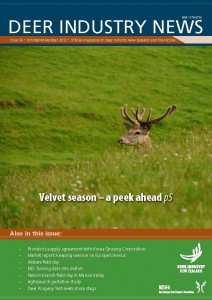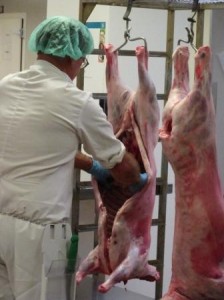 Is this the year for a sheepmeat strategy, asks meat industry commentator Allan Barber in his latest column. The key question for the meat industry this year is whether anybody will make any money, he writes.
Is this the year for a sheepmeat strategy, asks meat industry commentator Allan Barber in his latest column. The key question for the meat industry this year is whether anybody will make any money, he writes.
After last season when farmers enjoyed unprecedented procurement prices and the meat companies lost millions of dollars as a result, prices have headed south and look set to remain there for the foreseeable future.
Sheepmeat is the product most under threat with the traditional markets all showing serious signs of indigestion. As an example, a US importer has been reported as saying he has a year’s worth of inventory and can’t buy any more and neither is anyone else. This signals a major problem for middle cuts like lamb racks, while Europe isn’t exactly rushing to buy any product either.
This explains the amount of cheap sheepmeat available on our domestic market, although unfortunately local consumers have been turned off buying lamb as a standard part of their diet by last year’s high prices – no different from the rest of the world; and expecting New Zealand’s minute population to absorb any significant part of the oversupply is a bit like expecting Fiji to win the World Cup or the Black Caps to win the series in South Africa for that matter.
Beef may resist the worst of the price downturn because US demand remains steady against a backdrop of falling domestic cow numbers and consequently an increased share for imported beef. Asian demand will also remain firm, while New Zealand exporters may be able to pick up some of Australia’s market share, as Australian supply to the USA is anticipated to take the lion’s share of the increase there.
But even beef will continue to struggle under the impact of our dollar which is set obstinately at about 84 US cents with the greenback unlikely to strengthen at all, unless Congress can agree on a fiscal solution to the enormous American debt problem. In spite of averting the fall over the fiscal cliff, the US really hasn’t solved its long-term problem, merely postponed a decision.
The main difficulty for sheepmeat is the amount of inventory held by wholesalers and exporters which is waiting to be sold into a market which doesn’t need it and, even if it did, can’t afford to pay a price for it which will compensate for our exchange rate sitting at 52p and 0.63 Euro. This inventory problem will only be exacerbated by another season’s production which will hit its peak in less than three months.
If my pessimistic assessment is even only half correct, 2013 bears all the signs of an extremely difficult season for all participants in the sector. MPI’s forecast for farm incomes, down on last year, is still reasonably positive at least in historical terms, but it must come under pressure from any further price drops or cost increases. There is most unlikely to be any spare cash around.
After the beating taken last season by the processors, shown factually in the annual accounts of Silver Fern Farms, Alliance and Blue Sky Meats, and by implication in the results of the others, all the meat companies will be under pressure to get back into the black. The only way they can achieve this is to reduce procurement costs, increase operational efficiencies and sell inventory into the market, preferably with a profit margin on what it cost them.
This last one will be by far the hardest. There is already plenty of evidence of product being offered at very competitive, or silly, prices in spite of Keith Cooper’s claim before Christmas that working capital tied up in inventory is ‘good’ debt because it restrains companies from dumping product. Now if that isn’t a case of making a virtue out of necessity, I don’t know what is.
Logically if there is an inventory problem, it makes sense to quit it at the going rate rather than waiting for the market to recover by which time there will be more inventory in the freezer tying up more working capital.
The meat industry is becoming increasingly a division between sheep (very hard to make a consistent profit) and beef (quite or extremely profitable, mostly because of the livestock sourced from the dairy industry). Those companies which specialise in beef from dairy regions, notably Greenlea and Universal, appear to be very profitable without interference from the volatility of sheepmeat pricing.
Alliance has traditionally been the outstanding performer among the processors with a commitment to the sheep industry. Silver Fern Farms has reinvented itself as a company with a significant beef business which has reduced its vulnerability. But as last season’s results showed, the sheepmeat business placed serious pressure on their balance sheets which will inevitably continue throughout this year.
This may be the year when some serious strategic thinking is applied to finding a viable industry model for sheepmeat alone, instead of trying to find a single solution for the meat industry as a whole.
This column has appeared in NZ Farmers Weekly and interest.co.nz and is reproduced here with permission. Allan also has his own blog Barber’s Meaty Issues.




